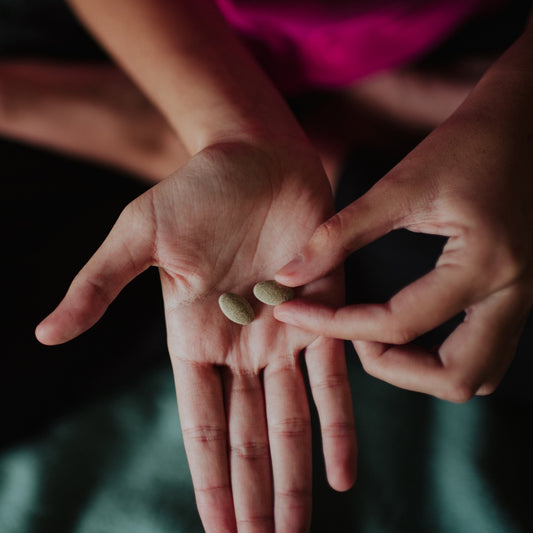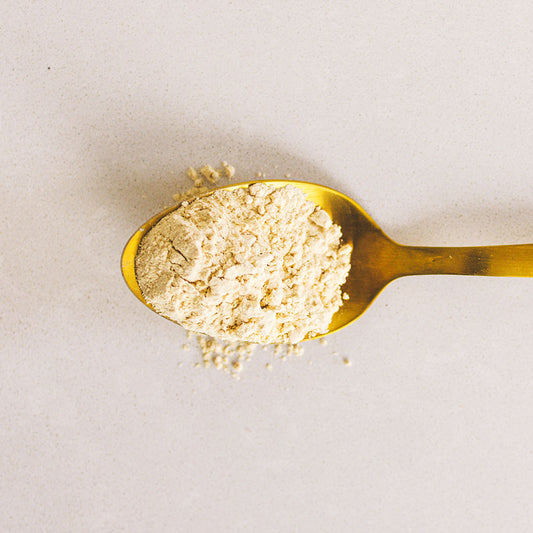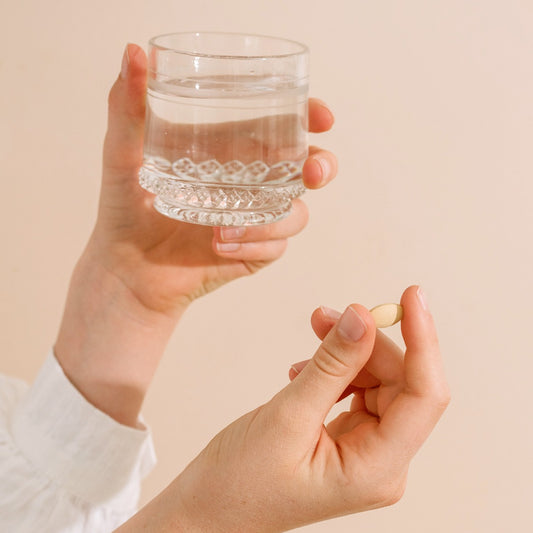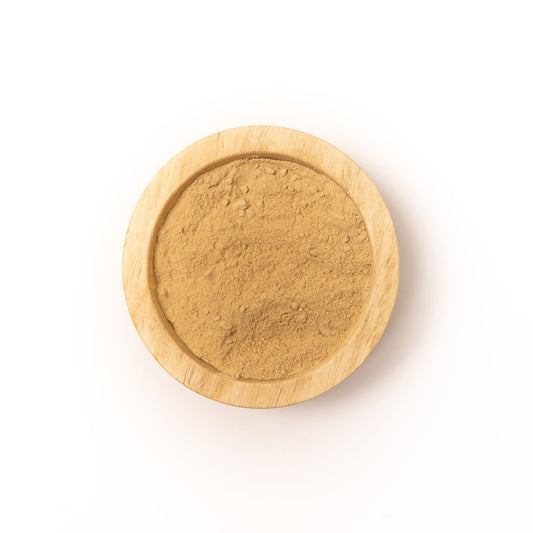It happens to all of us, right? Around the same time each month we start to feel our breasts swell, we notice ourselves being a little more sentimental, irritable, or lethargic. We might be holding on to a little extra water weight, we crave chocolate, salt, sweets, and a nap.
For a moment we wonder, “What's wrong?” Then we instantly answer our own question, wait a few days, and our cycle arrives. We rush to the store to stock up on sanitary napkins, Midol, and the usual “dear god help me make it through the next five days” supplies. This is what happens to all of us, right?
Not exactly.
First off, not everyone has the blessed—and I do mean that sincerely—fortune of getting their period on a monthly basis. If you are not pregnant and between the ages of menarche to menopause and you get a monthly cycle—celebrate! You have reason to be delighted.
You see, according to
Our reproductive tissues are the last layer to receive essential nutrients. Why? Because it is most important that we sustain our own lives before creating the life of another. If you have a monthly cycle, it means that all seven of your layers are nourished.
A steady, monthly flow of blood is actually a signal that you are fundamentally healthy. So why do so many of us dread it?
Many of us dread our cycle because it can be accompanied by unpleasant symptoms such as fatigue, blemishes, cravings, and mood swings (to name a few). Many of us have just resigned to the belief that periods are intrinsically linked to these fluctuations and we just have to deal with it.
This is not so. Healthy menstruation is the physical discharge of blood and mucosal tissue from the inner lining of the uterus through the vagina. This is a natural occurrence that is ideally routine and comfortable.
Many of the negative symptoms attached to our cycle are commonly known as PMS. But, more accurately, they are a request for more self-care.
Many cultures around the world revere the menstrual cycle as a time to tap into feminine power, fertility, and creativity. Bleeding is not seen as a curse, but as a blessing and a special power.
The physical body requests that we slow down and take care of ourselves during this special time. Ayurveda offers us tangible wisdom to directly apply self-care into our lives on a monthly basis, specifically around our cycle.
Avoid Cold Food and Fluids
Cold creates constriction. We need open

Drink Hot Tea
Menstrual discomfort is often the result of too much dryness and heat in the body. Help ease an uncomfortable back and occasional cramping by drinking ginger tea, chamomile tea, and rose tea. Rose tea is especially supportive for easing menstrual cramps and serves as a reproductive tonic. Alternate these three teas, having one a day for the week before and the week of your cycle.
Take Time to Rest
Discomfort is a signal to slow down. We know that, but what do we do? Typically, we continue to plough through as usual due to a sense of unrelenting responsibility, obligations, and commitments.
But the truth is, prioritizing our own well-being by taking time to slow down and rest will allow us to show up even more fully to the things that are most valuable and important to us. So rest. It's as simple as that. If it helps, you can adopt the affirmation, “I am taking care of myself.”
Massage Your Body with Coconut Oil
Coconut oil has cooling properties that help promote a relaxed nervous system and tissues. Before or after your shower, rub a generous amount of organic coconut oil in your palms until it is warm. Once it is warm, give yourself the luxurious gift of self-massage from head to toe. Take special care to massage around your belly, hips, and lower back.
Use Lavender Essential Oil
Soak a washcloth in warm water with a few drops of organic lavender essential oil and place it over your belly. The warm cloth with lavender brings peaceful and soothing properties that support the release of gripping or tightness in the uterus. You can also add 8–10 drops of organic lavender oil to your hot bath.
Journal
When we give ourselves permission to slow down and step back from the whirlwind pace of our lives, our menstruation time can provide a valuable opportunity to turn down the volume of the external world and turn up the volume of our inner world.
It is a time when the voice of our inner wisdom is heightened and we can access a place of deep inner guidance.
Journaling can be a powerful way to take advantage of this time by pausing and reflecting on the month. Every page in your journal is a blank canvas for your perspectives and ideas. Use them to express your feelings, thoughts, and desires. Give yourself a chance to tune in and become introspective.
Avoid Coffee and Caffeine
The Ayurvedic perspective on coffee honors that it can be great for some people at certain times, but during this time of month it's better to opt for non-caffeinated, supportive herbal teas.
Caffeine is linked to heightened estrogen levels, elevated symptoms of PMS, and amplified states of anxiousness. Our cycle is a reminder that we have permission to imbue relaxation into our days—we do not need to be jittery and overstimulated. At least, not for a few days!
Eat Foods that are High in Iron
These iron-rich foods are known as “blood builders.” As we lose blood, we need to simultaneously replenish our supply of blood building nutrients. Great sources of iron include: lentils, kidney beans, prunes, dates, goji berries, and green vegetables. Molasses is another fantastic source. You can add one tablespoon to hot water and drink it as a tea.
Support Yourself with Ayurvedic Herbs
In addition to the practices listed above, there are several
Women's Support
Featuring shatavari, one of the herbs most well-known to support the female reproductive system, Women's Support tabletshelp to promote regular and healthy menses and maintain a proper balance of hormones. Cleansing and slightly cooling, this formula helps to remove excess
Women's Natural Transition
Formulated specifically for the time leading up to, during, and transitioning out of menopause, Women's Natural Transition combines the most potent Ayurvedic herbs that support all levels of being—body, mind, and spirit. It brings nourishment and balance to the hormones and reproductive system, while also promoting a calm, clear mind and encouraging the energy of love and strength in the physical and emotional heart.
Breast Care Balm
Regular breast massage is an important preventative practice for anyone actively caring for the long-term health of the breast tissue. Formulated to improve circulation and clear accumulated stagnation in the breast tissue, Breast Care Balm is a delightful way to incorporate a transformative self-care practice and build a loving, respectful relationship with your breasts.
Beauty Balm
Featuring shatavari, ashwagandha, and rose geranium in a base of
Ayurveda teaches us that we can live in harmony by honoring the cycles of nature and utilizing practices that align ourselves with them. As women, our cycles bring us into direct relationship with the natural ebb and flow of life and serve as a reminder of our inherently wise and dynamic nature. Embrace this time as a gift. Give yourself permission to slow down, receive, and enjoy the blessings that a monthly cycle can bring.














